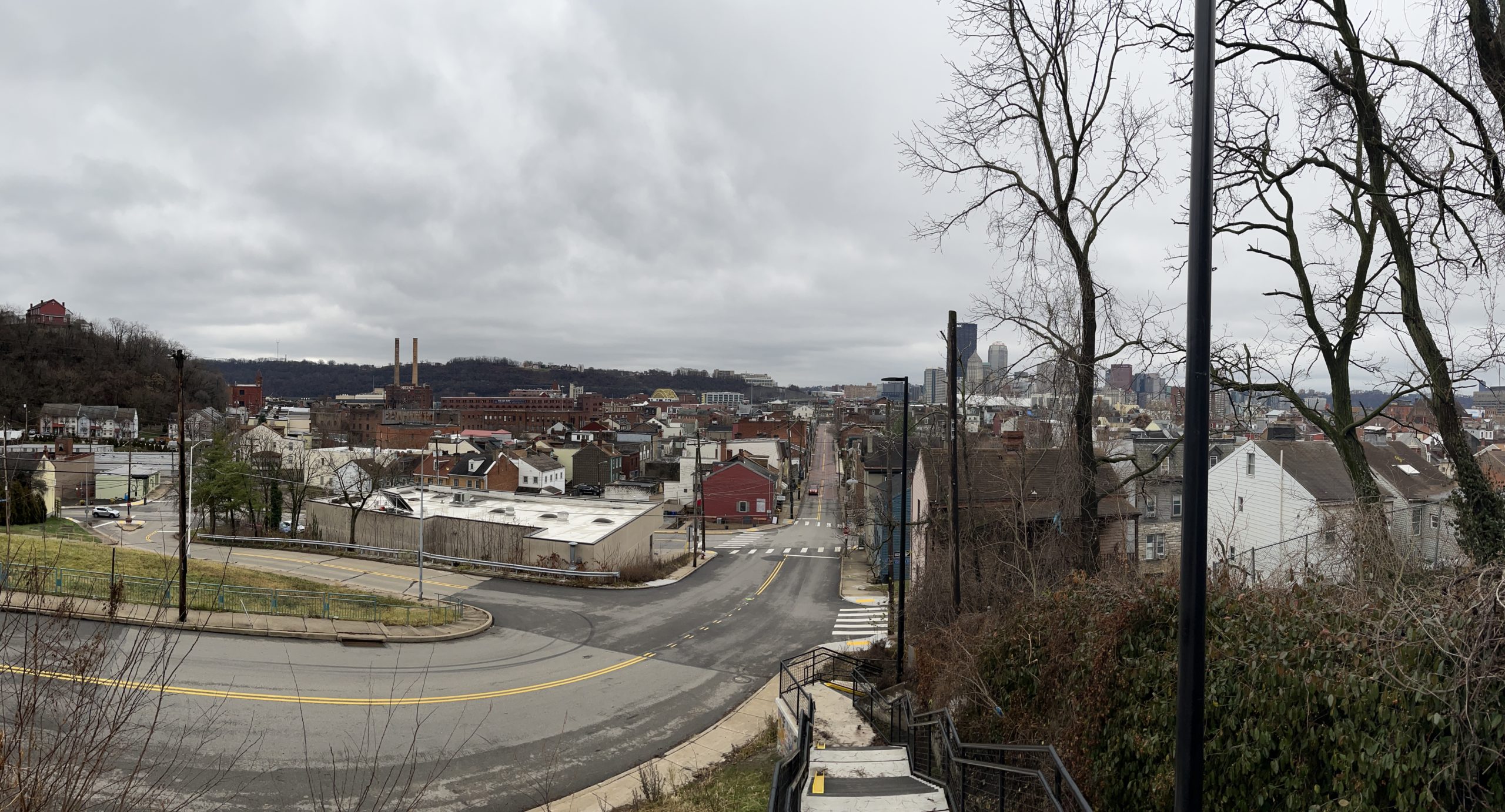Everyone knows Pittsburgh as the City of Bridges, but it could just as easily be called the City of Steps. There are almost 800 functional sets of steps in Pittsburgh. They range from towering concrete structures to rickety wooden staircases that snake up the hillsides.
Nearly every neighborhood has a set. Some have dozens. From Hazelwood to Brighton Heights, these structures connect local communities. Many serve Port Authority bus stops and T stations. Some steps even have so-called “orphan houses” along them—homes that can only be reached by climbing a set of public stairs.
Whether you’re looking to get out of the house in a COVID-19-safe manner, meet a New Year’s fitness goal, or just explore Pittsburgh, a climb up your local city steps is a great way to shake off the winter blues. Below are some of the steps with the most character and the best views. While many city steps serve more residential communities, these five stairways also connect to local businesses you can explore while you catch your breath.
57th Street Steps – Upper Lawrenceville
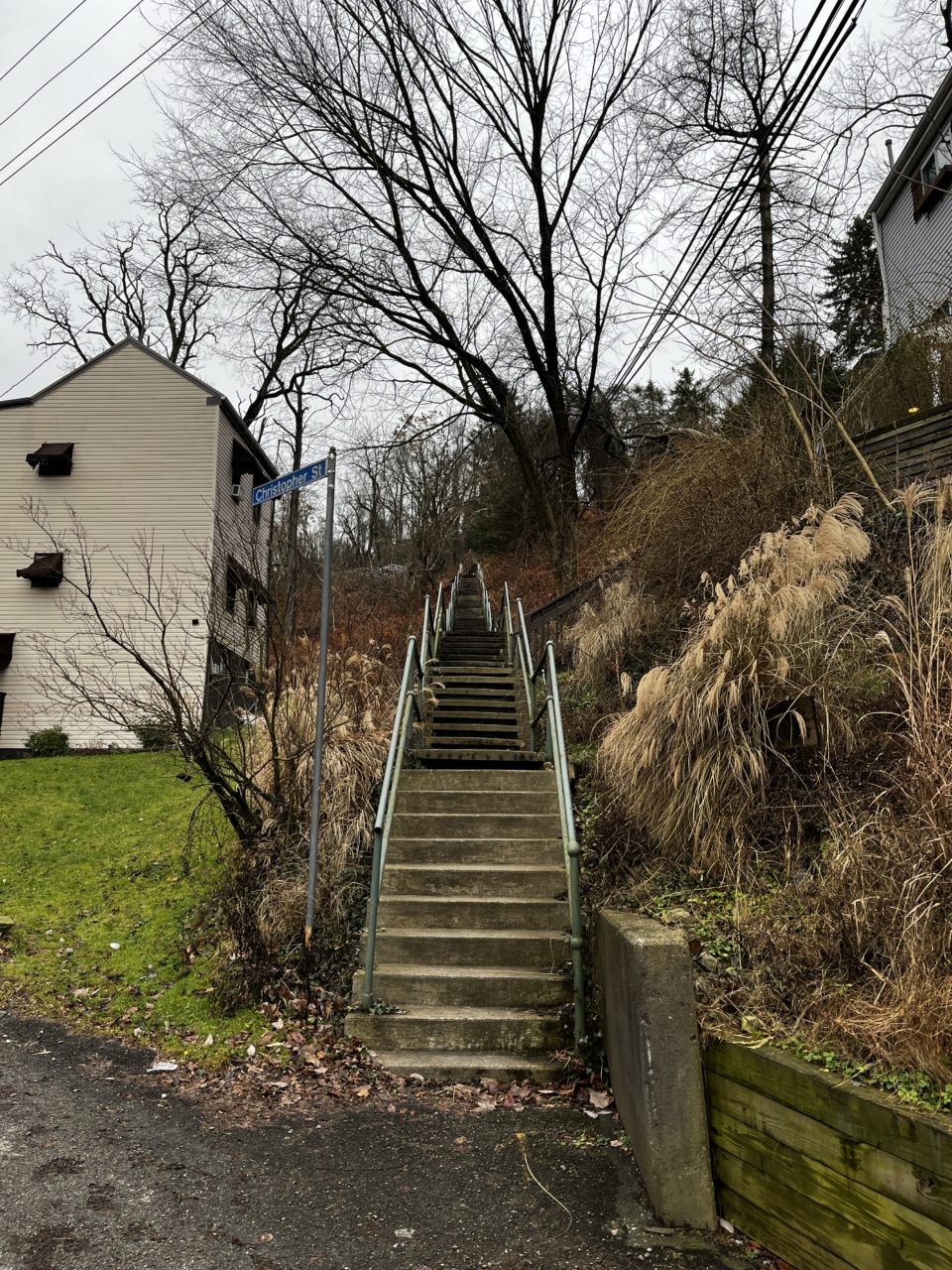
Upper Lawrenceville contains several sets of city steps, but none capture the neighborhood’s unique character and history like the 57th Street Steps. Located just around the corner from Hop Farm Brewing Company and Contemporary Craft, the 57th Street steps connect one of the quirkier corners of Pittsburgh with Butler Street. At the top of the steps, a single city block of rowhouses sits perched on a forested hillside. Further up are several “orphan houses.” This small neighborhood was carved out of what used to be a large estate and sick home run by local philanthropist Jane Holmes.
This part of the neighborhood is growing quickly, with the new Mews on Butler development now complete across from the Shop ‘n Save plaza. The 57th Street steps are a local lifeline for those further up the hill and offer a glimpse of Upper Lawrenceville’s past, present, and future.
Vista Street Steps – East Allegheny/Spring Hill/Spring Garden
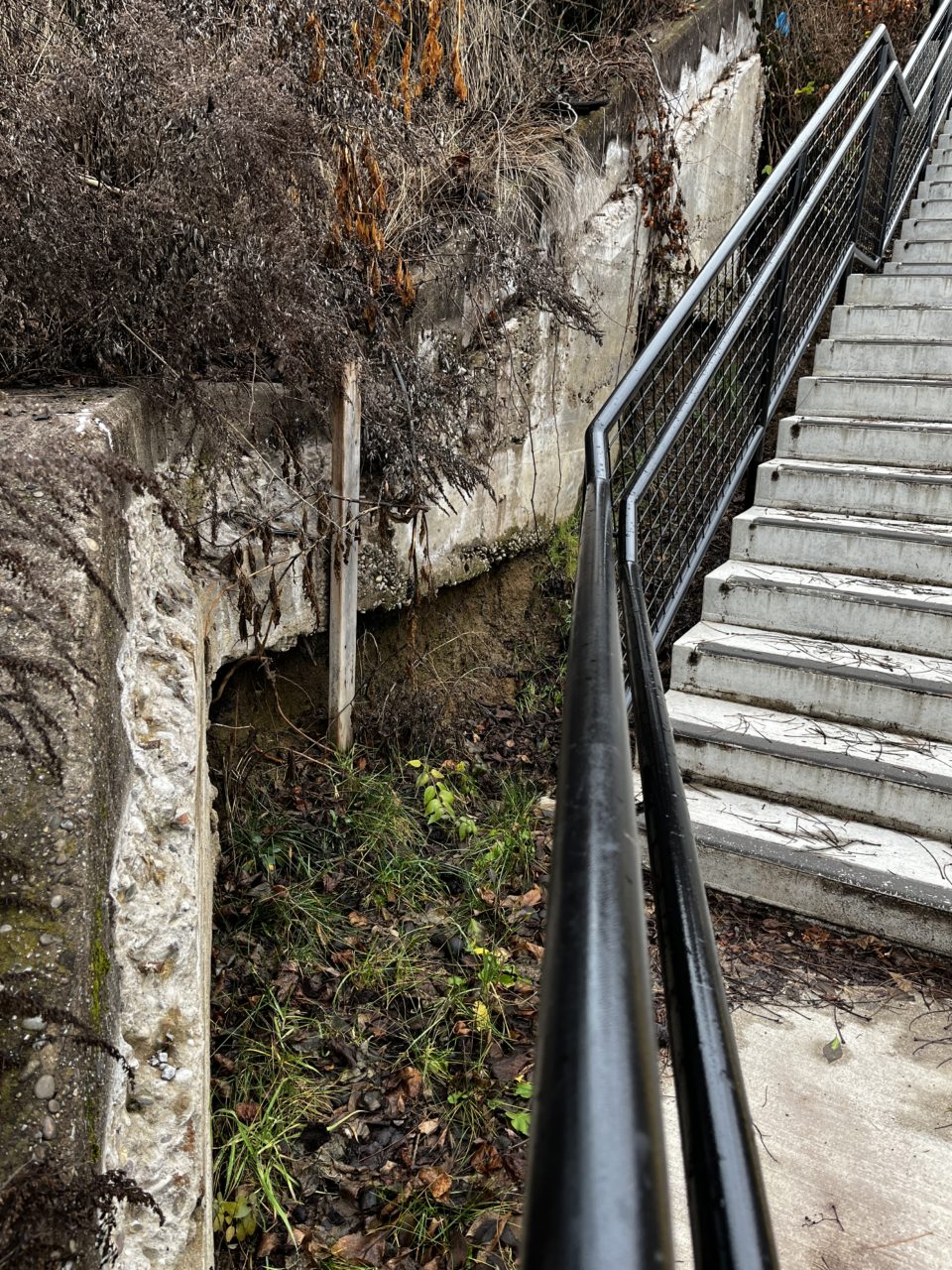
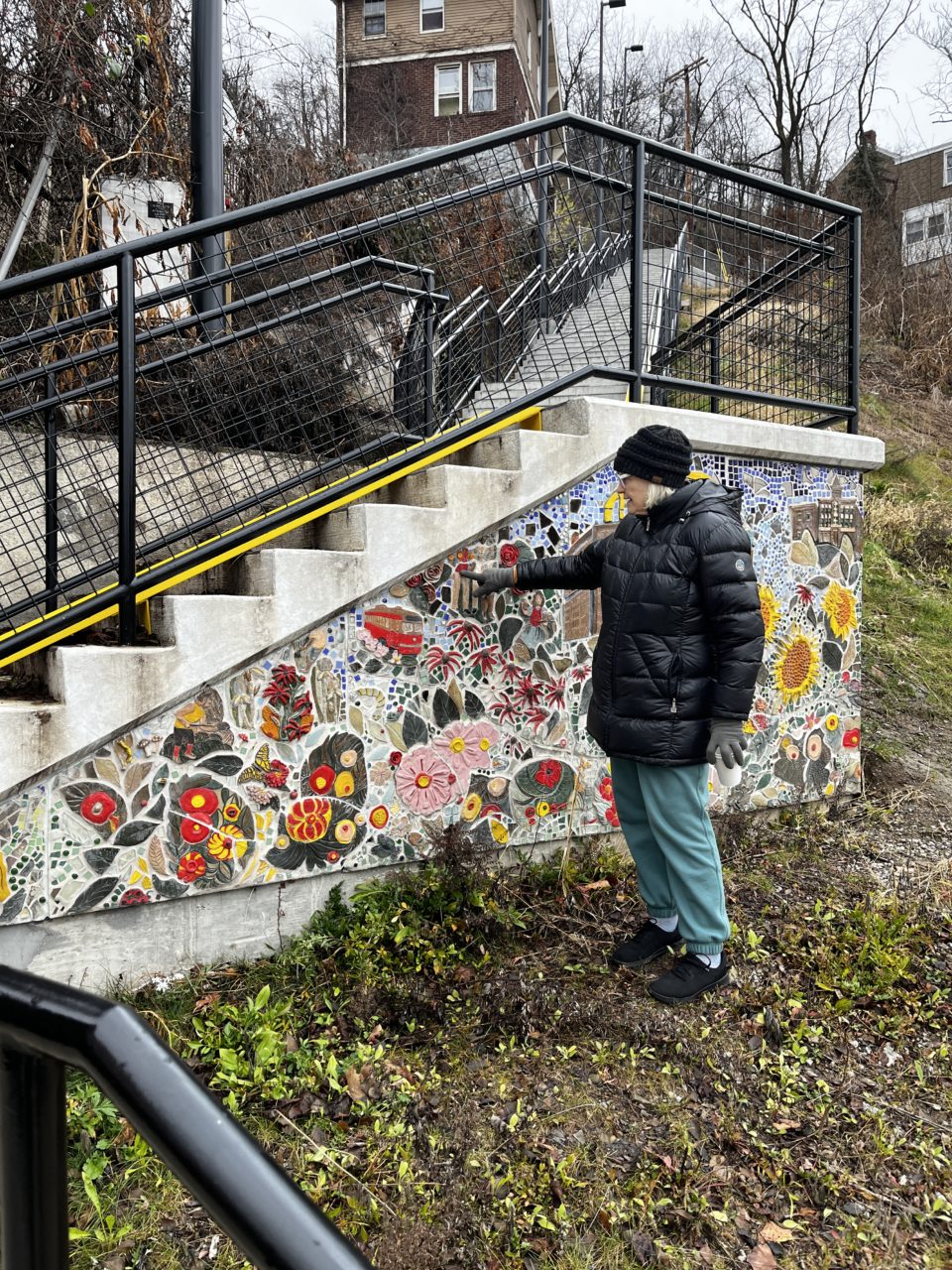
The recently-rebuilt Vista Street steps sit across from the Garden Café and down the way from Penn Brewery where East Allegheny, Spring Hill, and Spring Garden meet. Most striking about these steps is the beautiful two-part mosaic by local artist Linda Wallen, whose work can also be seen in nearby Perry Hilltop and in Braddock. She and 30 volunteers handcrafted the mosaic’s tiles nearby and fired them at Manchester Craftsmen’s Guild. “There were four things we had to include: the brewery, the bridge, the Männerchor, and the trolley,” Wallen says. The trolley’s history in the area is evident from the tracks still embedded in Chestnut Street.
Community members also feature. “That man is Jeff, who took care of the grounds here,” she says, pointing to a small tile figure weeding a garden. “He pulled weeds and planted the flowers.” Other figures include a local teen who helped Jeff, a depiction of journalist Ruth Ann Dailey, and local wildlife.
The Vista Street steps live up to their name. They’re a great spot to appreciate one of the North Side’s many panoramic views, with a striking view stretching from Spring Hill over the Heinz Lofts all the way to downtown.
Yard Way – South Side Slopes
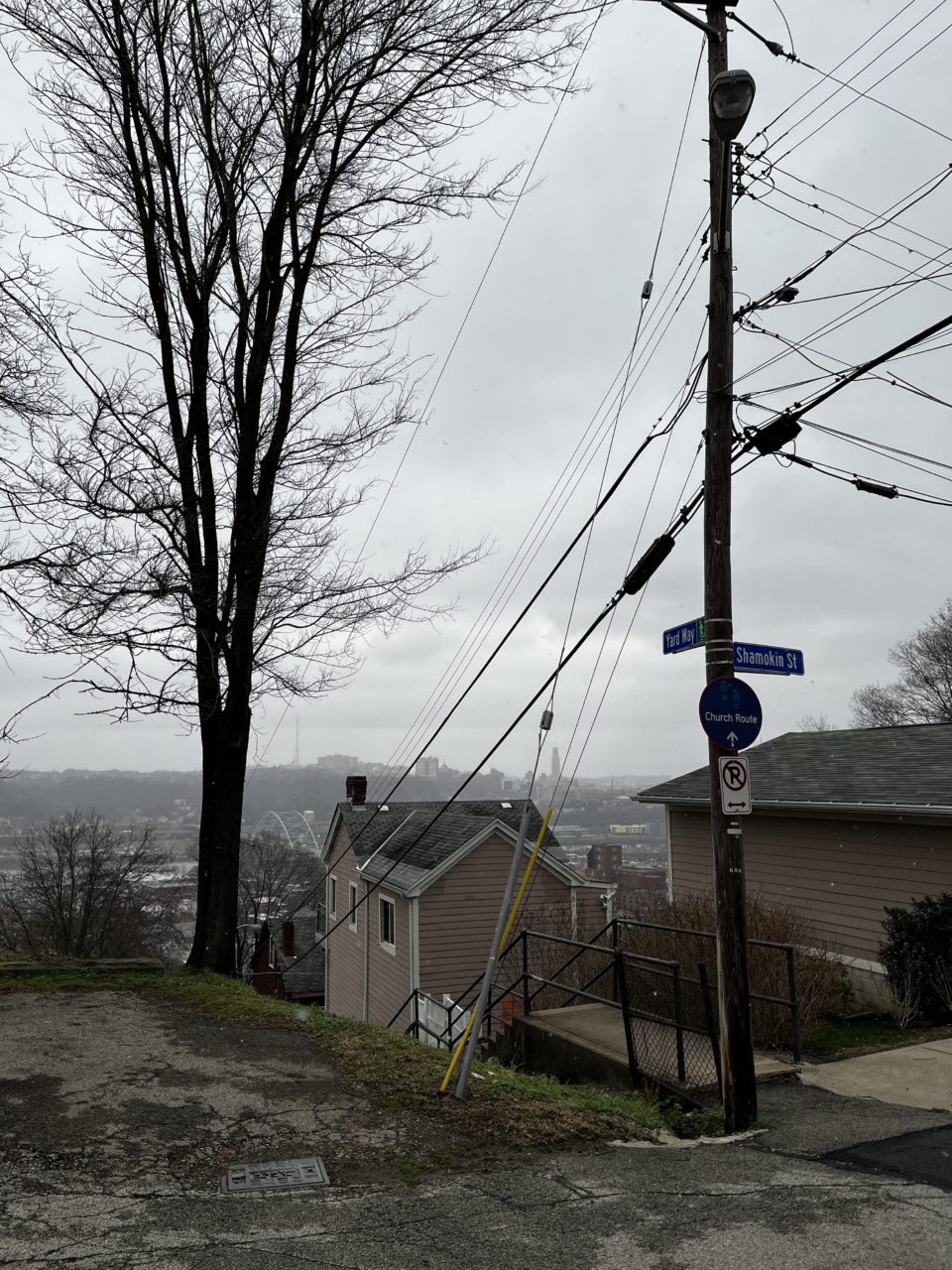
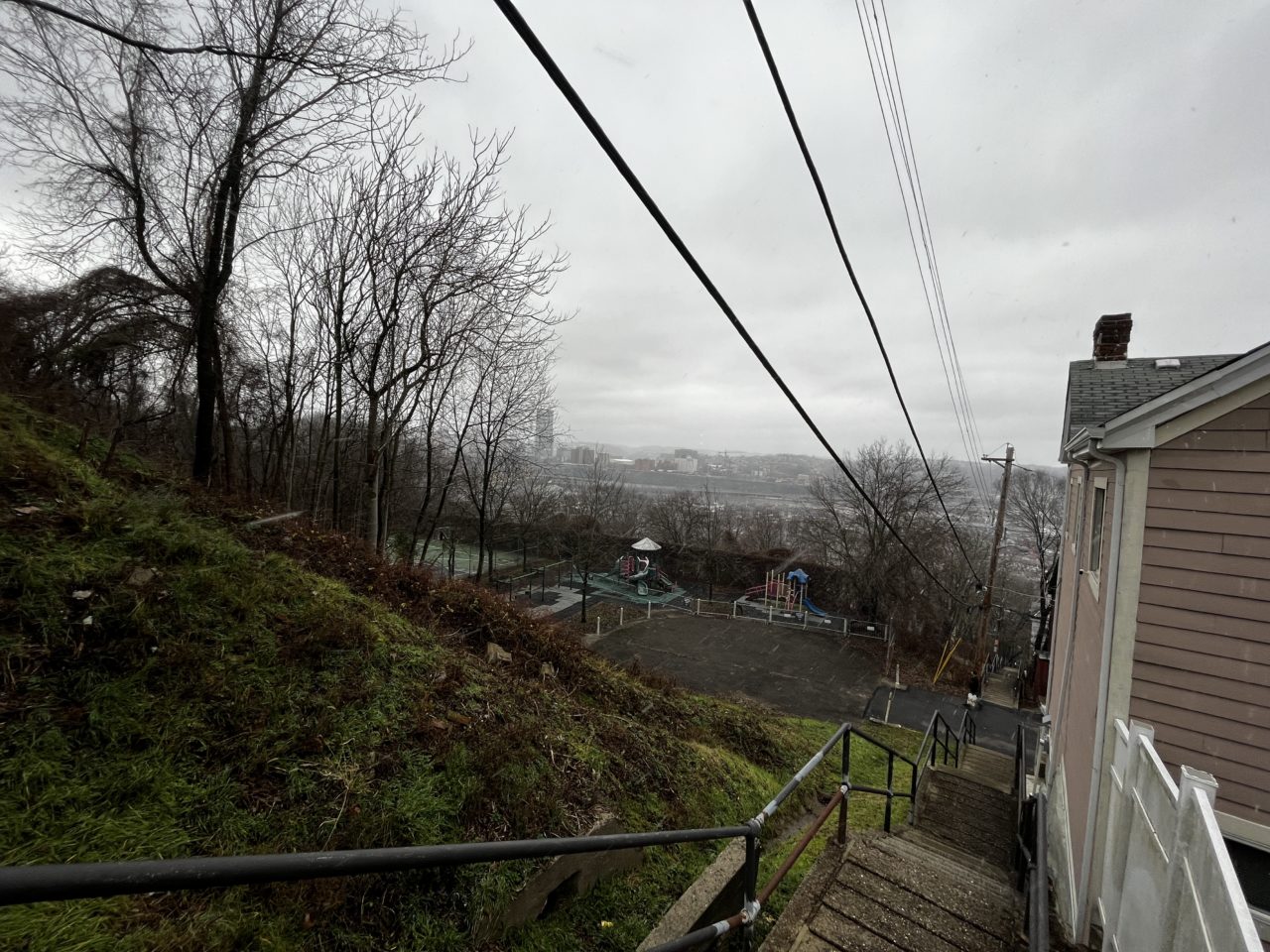
The Slopes have perhaps the best collection of steps of any Pittsburgh neighborhood. None embodies this better than the Yard Way steps, which lead from the Flats up past historic churches and connect several steep streets with a hilltop park that hosts youth sports. These steps are a serious climb, but they lead to a view out across the Mon to the Cathedral of Learning in Oakland.
At the top of the hill, a short walk takes you to—you guessed it—more steps! These lead down to 18th Street and several small businesses including the 350˚ Bakery. This shop bakes a variety of treats for numerous Pittsburgh businesses and maintains public hours during breakfast and lunch from Wednesday to Saturday.
Joncaire Street Steps – Oakland
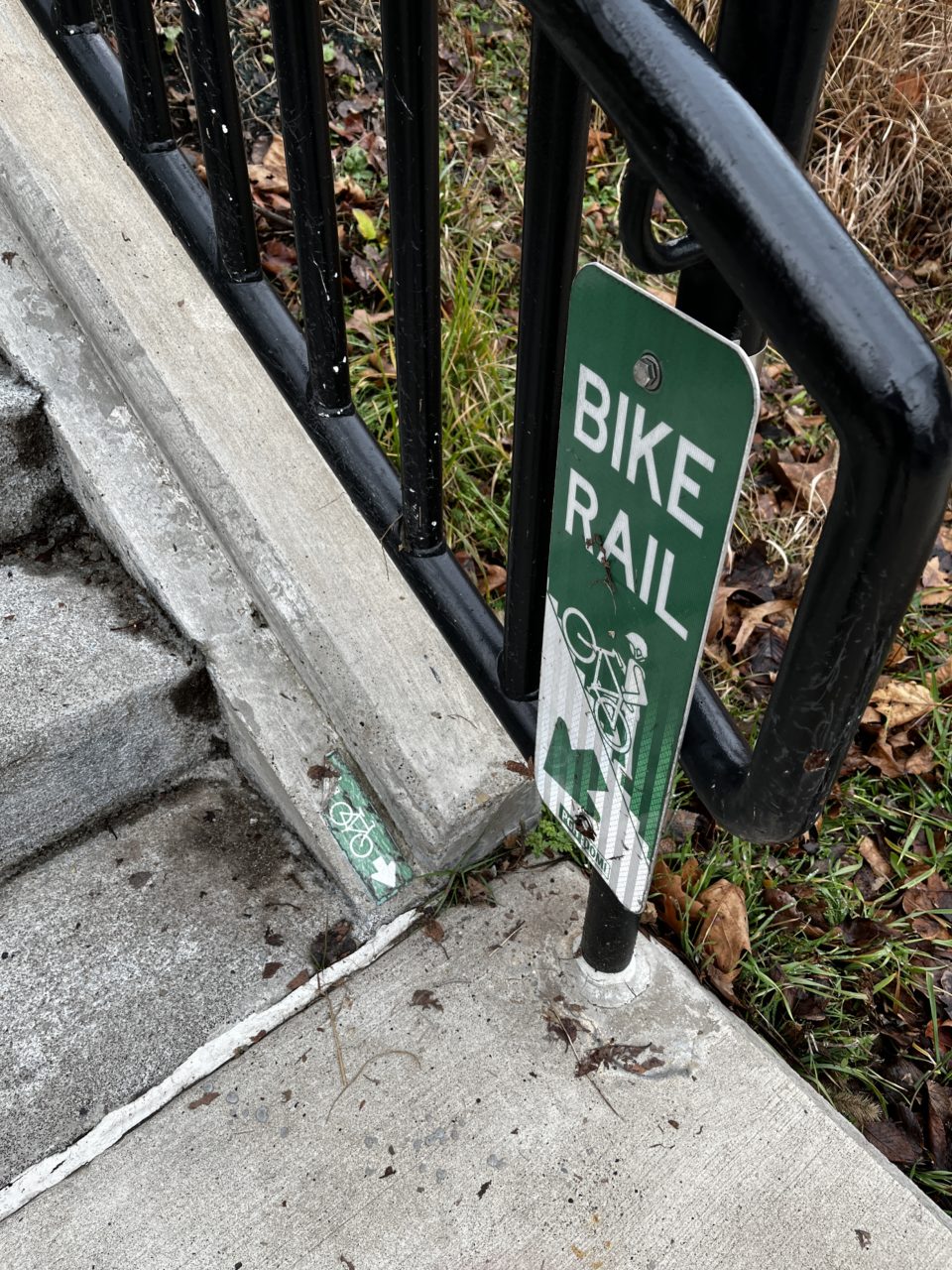
Just behind the Frick Fine Arts Library and the other buildings of Pitt’s campus are the Joncaire Street steps. Like those on Vista Street, they were recently rebuilt and feature a rail for easier bike transport. The Joncaire steps connect the busier parts of Oakland with the historic Panther Hollow neighborhood. A sign at the foot of the hill reminds visitors of the neighborhood’s connection to two Italian villages, Pizzoferrato and Gamberale.
From there, it’s a fifteen-minute walk to the Run, a neighborhood nestled in a narrow valley that’s home to eateries like Big Jim’s. The Joncaire Street steps give students and longtime residents of South Oakland and the Run easy access to the Carnegie Museums, Phipps Conservatory, and Schenley Park.
Shamrock Way – Garfield
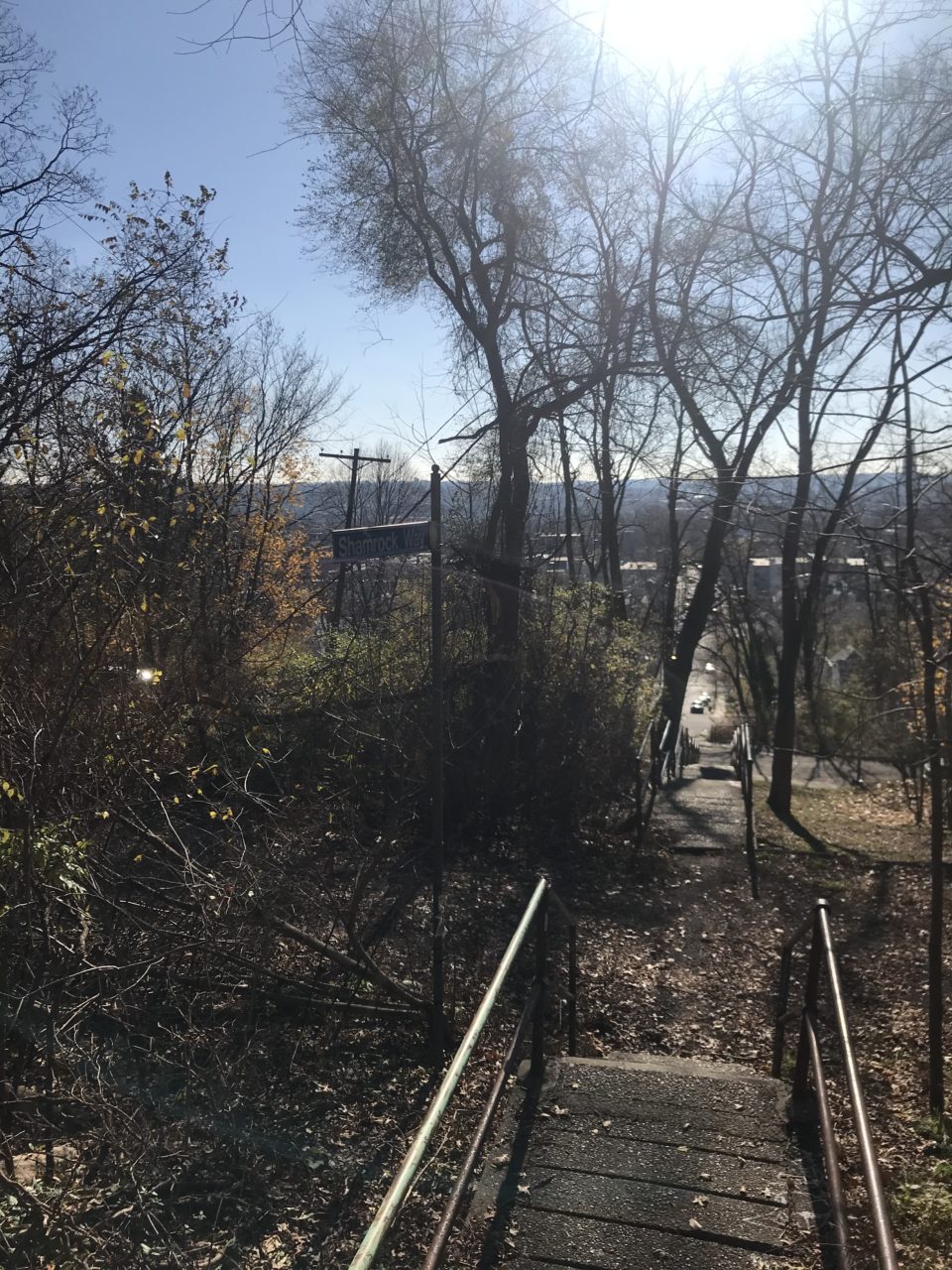
Garfield is another neighborhood with a large assortment of city steps. Just up from the Penn Avenue business district, which is home to numerous galleries and businesses like People’s Indian Restaurant, Shamrock Way connects the Bloomfield-Garfield corridor with the historic Fort Pitt School building and the Garfield Gators’ football field. These steps get bonus points for the fun name, which derives from Garfield’s history as an Irish neighborhood.
Shamrock Way features a view through the trees that extends from East Liberty to Shadyside, with several hospitals and the Cathedral of Learning also visible. Like the others on this list, these steps show the ways Pittsburgh continues to change and adapt to our unique terrain.
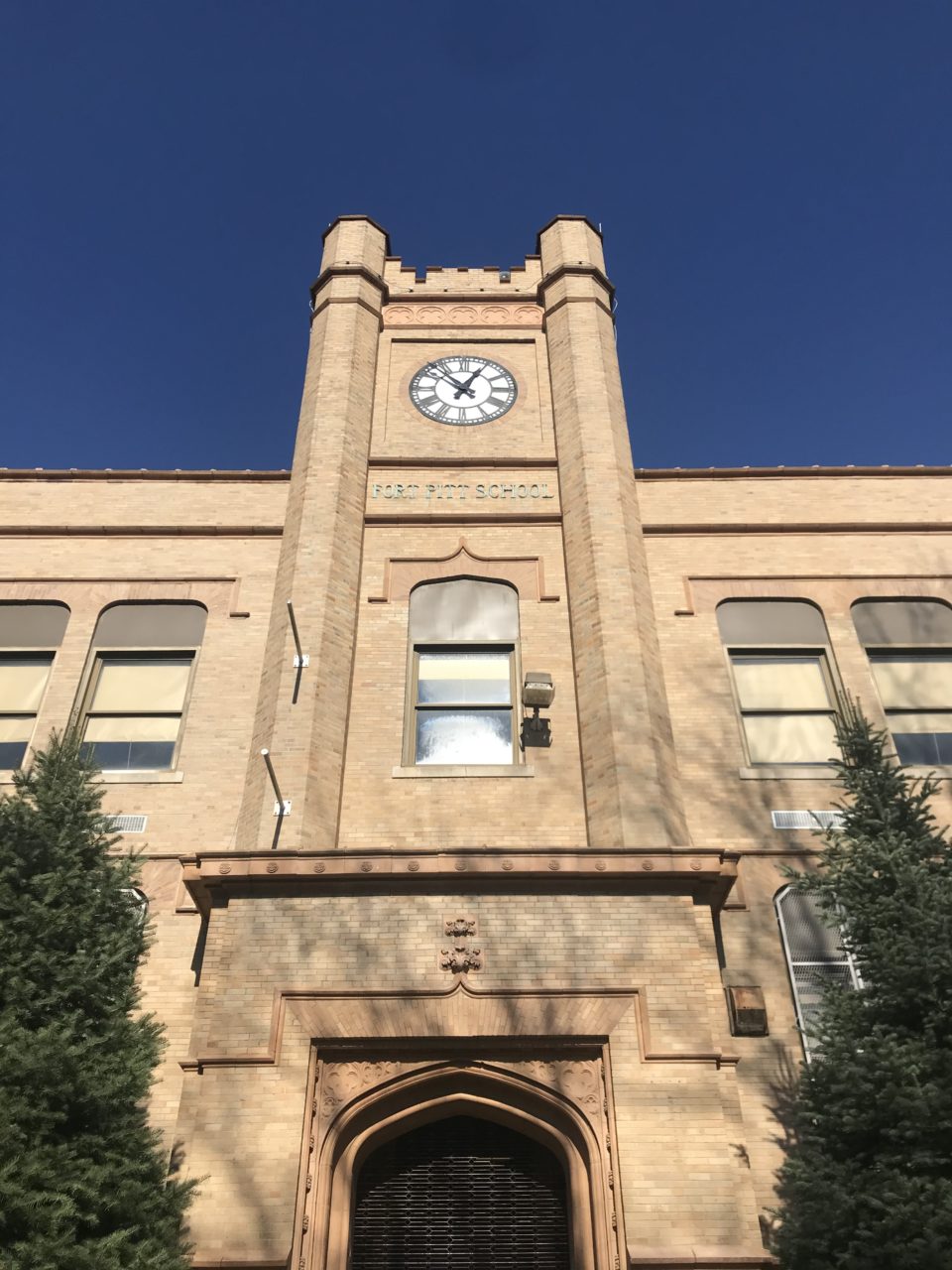
RELATED CONTENT
Ep. 15 Laura Zurowski’s quest to climb all of the Pittsburgh Steps

